You must be logged in to rate content!
9 minute(s) of a 217 minute read
11-28-2015
I am sorry!
Perhaps all that was a bit too technical for all you "restorers" who's most difficult decision making is whether to sign the cheques with a ball point, or a felt tip pen?
Perhaps we could have a really meaningful discussion about the sociological implications surrounding the choice of either blue or black ink?
There again what is revealed about those complicated souls who choose to only use green ink?
Will your Bank accept cheques signed in RED ink?
Is it still possible to be "happy and gay" without being homosexual?
For the really deep thinkers, should we drink local "sparkling wine" or insist on only top shelf French Champagne?
I look forward to reading your answers to these most important questions......
Bj

11-29-2015
Thank you all.
Perhaps Australian humour is a little too finely honed for most of you.
As Fossoyeur can tell you Mumm's is one of the top ten labels of French Champagne.
In English humour, to keep Mum, is to keep quiet or retain a secret.
Hello On Safari
I will run it past my Camshaft specialist and be guided by him.
To all the others, I do wish that you would "keep up". Australian Humour loses a lot in the "translation"- explanation!
ie. Australian humour is similar to the English but often more cutting and "closer to the bone". This is particularly true when associated with people of a "certain age" (Pre-ww 2.).
Again I am sorry, I would have thought that anyone with even the most basic mechanical knowledge would have understood a valve timing diagram. I must stop judging others by my own standards,
ie. "self-taught" at the School of Hard Knocks.
Bj.
To explain how a timing diagram works. imagine that you are looking at the camshaft from the front of the engine. The vertical line marked TDC and BDC relates to number one piston. tdc is 'top dead centre' meaning that No 1 piston is at the top of the cylinder, at the top end of its stroke. bdc is botton dead centre so the piston is at it's lowest point at the bottom of its stroke.
The two lines show the posion of the lobes of the camshaft for number one cylinder. The inner circle is marked Inlet Valve while the outer circle is marked Exhaust Valve. In this case it shows that the cam lobe for the inlet valve is just starting to lift the inlet valve at 25 degrees before TDC and at the other end of its travel is allowing the inlet valve to close at 70 degrees after BDC that is just as the piston is commencing its compression stroke. This indicates that the inlet valve is open for a total of 275 degrees. In a four stroke engine the spark plug fires every second rotation of the crankshaft. This may confuse some people, the term "four stroke" relates to the piston traveling the lenght of the cylinder bore four times (up-down-up-down) Because the cam shaft driving gears or chain wheels are "geared" 2:1, the camshaft rotates only once to two rotations of the crankshaft.
The exhaust lobe on the cam in this case opens 45 degrees before BDC and the valve closes at TDC. The exhause valve is open for 225 degrees.
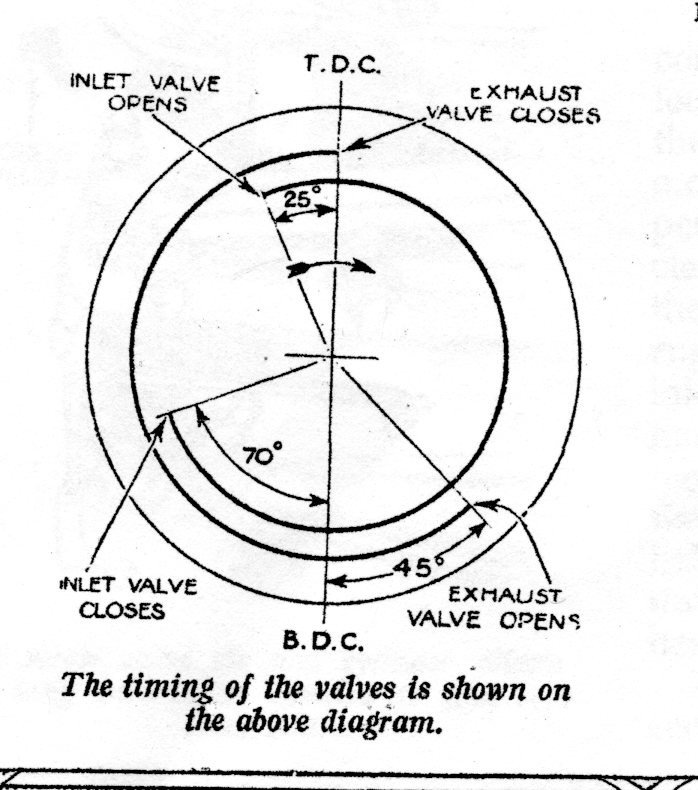
Hello Spinneyhill
Nice to have a friendly Kiwi. You actually jumped the gun a bit, I had to go and eat my lunch but I will add the other diagram here.
Louis Renault had been building cars from the "turn of the century" 1899-190 and was largely self taught. I am not sure if his valve timing was intentional or by accident. The pity is that he was still using very small valves and ports in 1929 (21mm=less than 1 inch) and there is no way that you can fit bigger valves. His (side valve) cylinder head design is obviously the result of much thought but not quite up to Riccardo. I suppose that he had reliability and economy in mind first and foremost. Anyone wanting a more detailed explanation of valve timing can send me a PM and I will scan some relevant material and send it to them,
In the meanwhile here is another diagram that may help.
Fossoyeur will no doubt agree the best place to drink French wine is in France although the (very) occasional bottle of Mumm on special occassions is most enjoyable anywhere.
This diagram is from my copy of Odham's Practical Automobile Engineering (revised edition) probably printed in the late 1940s or early 50s. It runs to 480 pages and covers most aspects of basic maintaince and repair. My copy was obtained second hand about 40 years ago and is still an informative reference for anyone working on cars of the period. 1920s to 1950s.
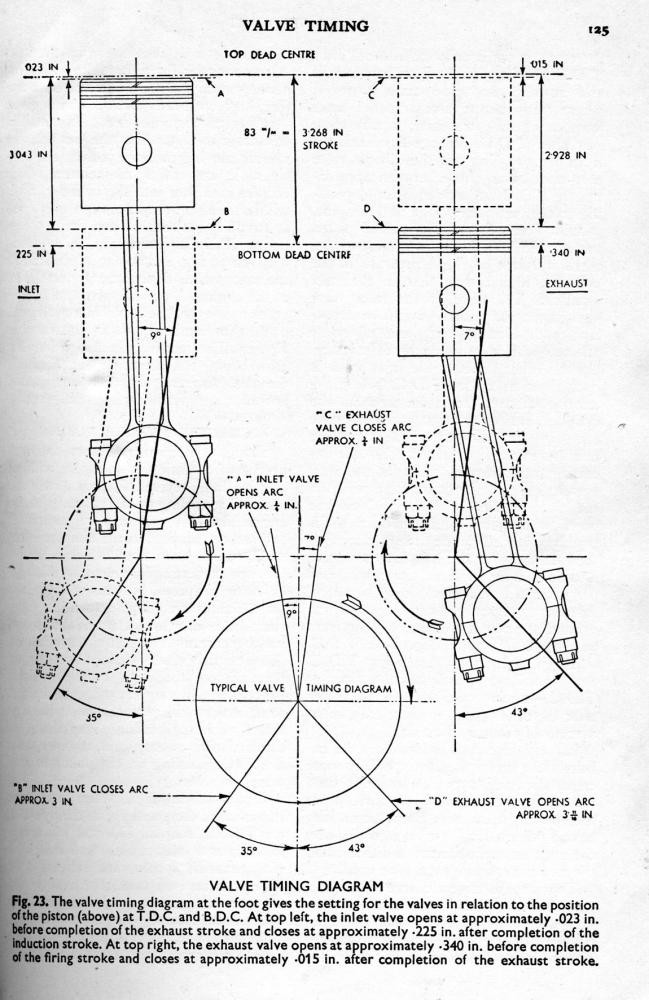
11-30-2015
The other theory is that by using "tuned length" individual exhaust pipes you gain an "extractor effect" where each pulse creates a partial vacuum behind it, sucking the inlet charge into the combustion chamber in the process giving a more effective filling. This is where the over lap ie; both valves open, is really benefitial. I guess it all depends what you are looking for in your car. Basically in order to gain the maximum power increase you need to have everything working together, within the most desireable rev range.
Prior to "de-tuning" our Lagonda Rapier the maximum power came in between 4,000 and 6,000 rpm which was fine for sprint races but did not make for pleasant long distance touring. It now has more than ample torque (pulling power) at low revs and will amble along at 2,000 rpm (30mph). Only thing is, it still complains on anything less than 98/100 octane fuel.
None of this matters, if all you do is push your car into a trailer, then park it all day on a Show-field.
I think that the Rapier would simply go berserk if I suggested that it travel in a trailer and then stand around all day. Mis-treated it can get really nasty and can give you a savage bite, especially in the hip-pocket. It needs regular exercise and prefers nice long runs over hilly terain. It alsolutely loves it when we take it to Europe and let it loose on some of the historic Alpine Passes. How do I know all this? It talks to me all the time when we are out driving. If your car does not talk to you, you are missing out on all the fun of driving an old car.
Bj.
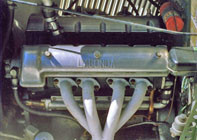
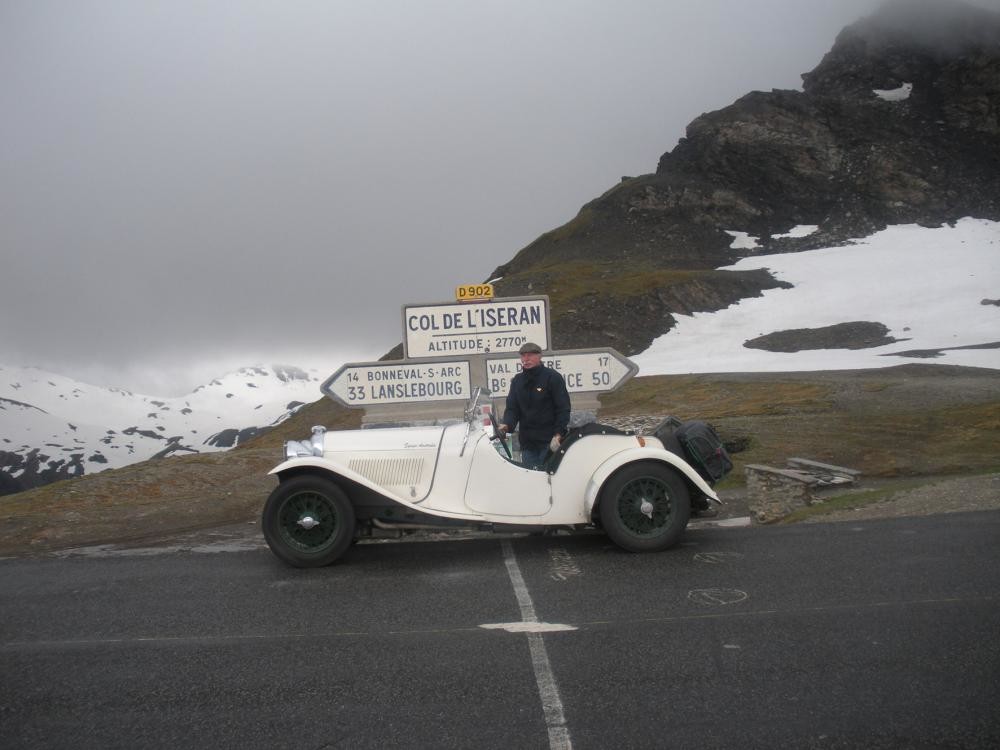
Thank you David
How nice to hear from you again. Re your question as to why were manufactures so conservative? There are a number of reasons.
The first being Engineers they would have been educated to always stay on the safe side. The fuel available was probably the most significant limiting factor.
The customer dictated that their vehicle was trouble free and long lived. Very often components were hand finished and possibly not to the fine tolerances we are familiar with today.
Mainly due to the type of road surfaces most frequently encountered speeds were extremely slow by todays standards.
The original owner of your Maxwell would not have dreamed of doing the distances or the speeds that you drive the Maxwell at or over today.
Cars were essentially utilitarian and not the playthings that they have becone.
Can you imagine using the Maxwell as a daily driver or how long it would last if you did. I am sure that you have read any number of accounts written by Early Motorists and their trials and tribulations.
Re: My aversion to Cheque Book Restorers. On my very first visit to the UK while at a VSCC event I was introduced to a well known"Titled" gentleman of "a certain age'. Before shaking my hand he grabbed my wrist and turned it over to inspect my fingers. On doing this he exclaimed "Ah! you have Nut undoing fingers, I will shake your hand and be happy to talk with you" This is something I still remember quite vividly almost 50 years later. How many people still have nut undoing fingers? I for one certainly still do! I have had them since Primary School age & hopefully will die with them.
Bj.
Now for something a little lighter..........
Bj.
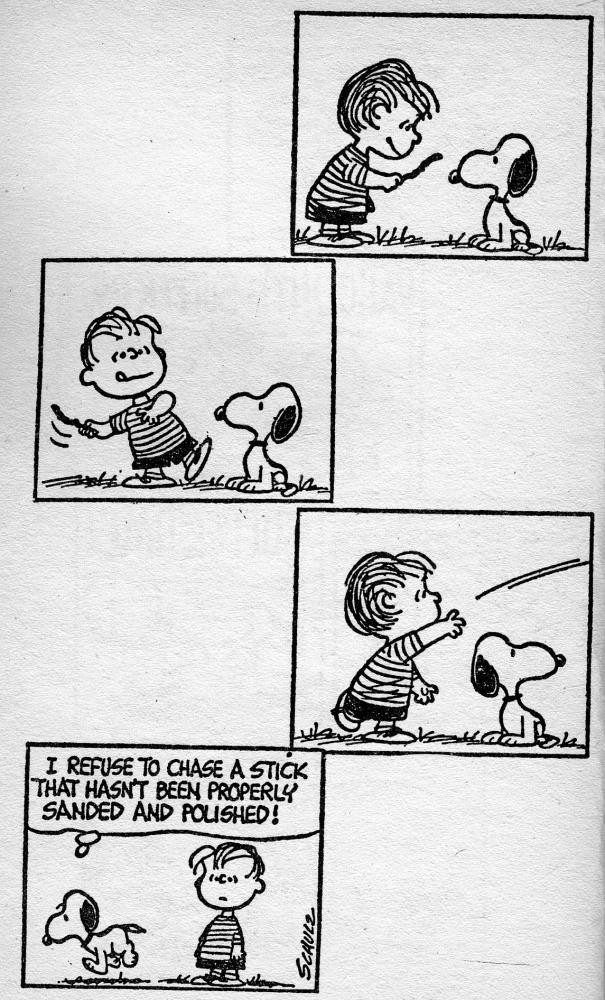
In case you missed this one as part of my earlier post #343 here it is again. Taken in the Alps during our 2009 visit. The Col de L/Iseran at 9,088 ft is the highest paved pass in France. Closed during the Winter this photo was taken during the Summer. Some fantastic motoring, although the altitude does do some funny things with SU carbs making the mixture somewhat richer. Fortunately Rapier engines seem to be happier on a rich mixture. The question is would the Renault with the same cubic capacity (1500cc) and two extra cylinders manage to climb it?
Bj.

12-2-2015
Leaving the Renault for the moment I have started this morning on the job of replacing the Lagonda Rapier timing chains.
see:- http://forums.aaca.org/topic/183184-lagonda-rapiers/page-15?&p=1432162
This is so cool!
Posted by Diggymart on 3/26/20 @ 6:09:01 PM